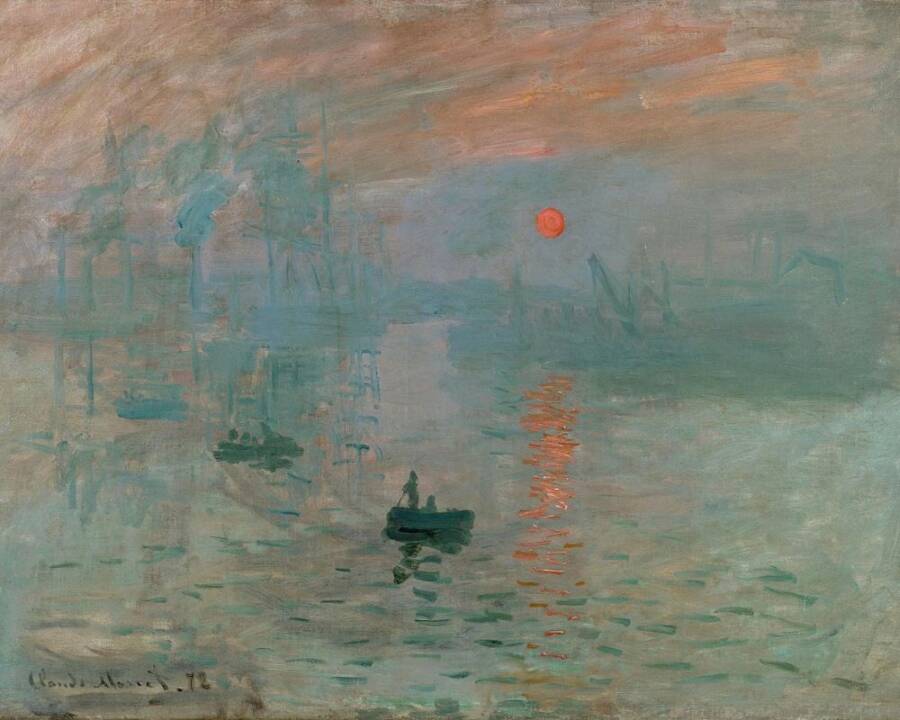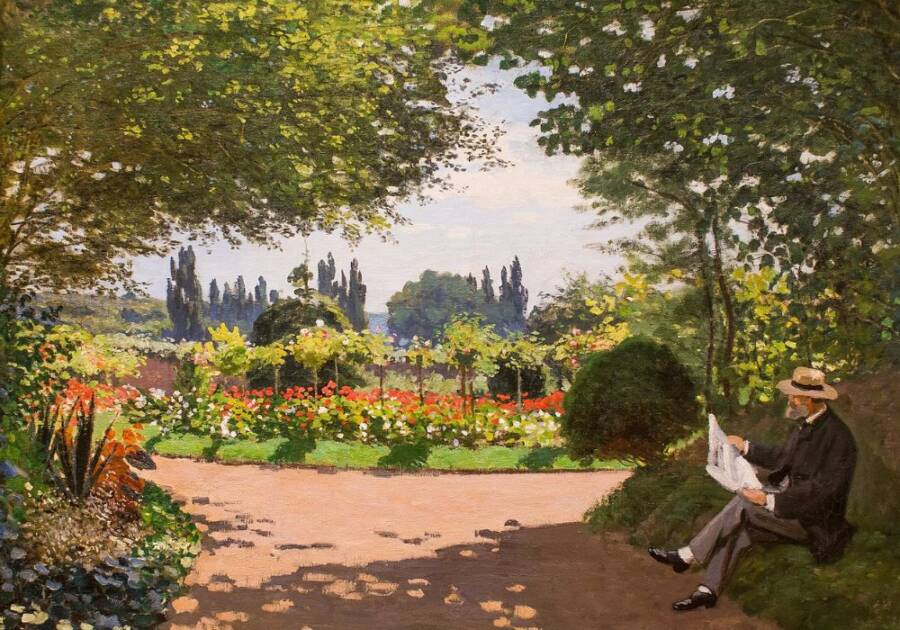After examining famous Impressionist paintings by Claude Monet and Joseph Mallord William Turner, scientists suggested that air pollution during the Industrial Revolution likely influenced the art style's signature "haze."

Public DomainImpression, Sunrise by Claude Monet, 1872.
A recent study found that famous Impressionist painters such as Claude Monet and Joseph Mallord William Turner may have based their later paintings on their air-polluted environments — providing an alternative explanation for Impressionism’s signature hazy, dream-like glow.
The study, conducted by scientists at Harvard University, Sorbonne University, and École Normale Supérieure, found that Impressionist paintings by artists like Monet and Turner closely followed 19th-century pollution trends.

Prior to the study, art historians described Impressionism as an art style of perception rather than reality. According to the National Gallery of Art, Impressionism originated among French artists in the 19th century. It emphasized the use of natural light, unblended brush strokes, and strong colors. Upon attending one of the first Impressionist art exhibitions, visitors noted that the art style rendered “not the landscape, but the sensation produced by the landscape.”
“Impressionists wanted to paint not simply what they saw but the way they saw it,” the National Gallery of Art wrote.

Rain, Steam, and Speed — The Great Western Railway by J. M. W. Turner, 1844.
In 2022, researchers noted that many Impressionist paintings often depicted metropolitan life in and around large cities. Given that Impressionist artists were painting at the height of the Industrial Revolution, when coal burning was common and air quality was poor, researchers started wondering: Could the signature haze in Impressionist landscapes be a result of the artist’s polluted reality, or was it simply a characteristic of the art style?
First, scientists looked for historical accounts of air pollution from the artists themselves. According to Tate, one of the largest art galleries in the United Kingdom, Claude Monet wrote about his love of London fog in a letter to his wife in 1900:
“I am working very hard, although this morning I really thought the weather had changed completely; when I got up I was terrified to see that there was no fog, not even a wisp of mist: I was prostrate, and could just see all my paintings done for, but gradually the fires were lit and the smoke and haze came back.”
Researchers then began examining 100 works of art by both Claude Monet and Joseph Mallord William Turner, two of the most famous Impressionist artists.
Researchers selected the two painters because of the time period in which they lived and worked. In an interview with Live Science, Anna Lea Albright, one of the lead authors of the study and an atmospheric scientist, stated: “Turner was born in the age of sail and died in the age of steam and coal — his lifetime spans a time of unprecedented environmental change… Monet painted later, in the second Industrial Revolution in London and Paris.”
The study also focused on Monet and Turner because neither artist suffered from vision issues that would explain the haziness of their art during their later careers, according to The Scientific Journal of the Royal College of Ophthalmologists.
With their artists in mind, scientists began testing the ways air pollution affects light and compared their results with historical data on sulfur dioxide emissions in London and Paris during the Industrial Revolution.
“Air pollution absorbs and scatters light, making objects at a distance look hazier,” Albright told Live Science. “By scattering background light of all wavelengths into the line of vision, the presence of air pollution gives images a whiter tint.”
Albright continued by comparing these findings with Monet and Turner’s work: “Over Turner and Monet’s careers, I noticed that the contours of their paintings became hazier, the palette appeared whiter and the style transformed from more figurative to more impressionistic.”
According to the published study, Monet used low contrast in his work later in his career, confirming trends researchers would expect to see as emissions reached new highs in Europe. Additionally, the study found that early Monet paintings featured landscapes with a background visibility average of 15 miles (24 kilometers). Later in his career, visibility would drop to less than four miles (6 kilometers).

Public DomainIn contrast to some of Monet’s later paintings, his earlier works included much more detail and greater visibility.
“We knew Turner and Monet were painting during the Industrial Revolution with its unprecedented environmental changes. Their stylistic transformations accord with physical expectations of how air pollution influences light,” Albright said.
According to the study, researchers tested their theory against work by several other Impressionist artists and confirmed the same findings: as the air became more polluted, painters portrayed these environmental shifts in their work, demonstrating a “polluted realism” that differs from the common understanding of Impressionism.
Peter Huybers, a climate scientist and professor at Harvard University and a co-author of the study, noted: “Impressionism is often contrasted with realism, but our results highlight that Turner and Monet’s impressionistic works also capture a certain reality.”
“The idea that Impressionism contains certain elements of polluted realism highlights how connected we are to our environment,” he concluded.
After learning about how air pollution affected Impressionism, view 40 photos of the most stunning street art in the world. Then, read about the life and death of famous Surrealist artist Frida Kahlo.





